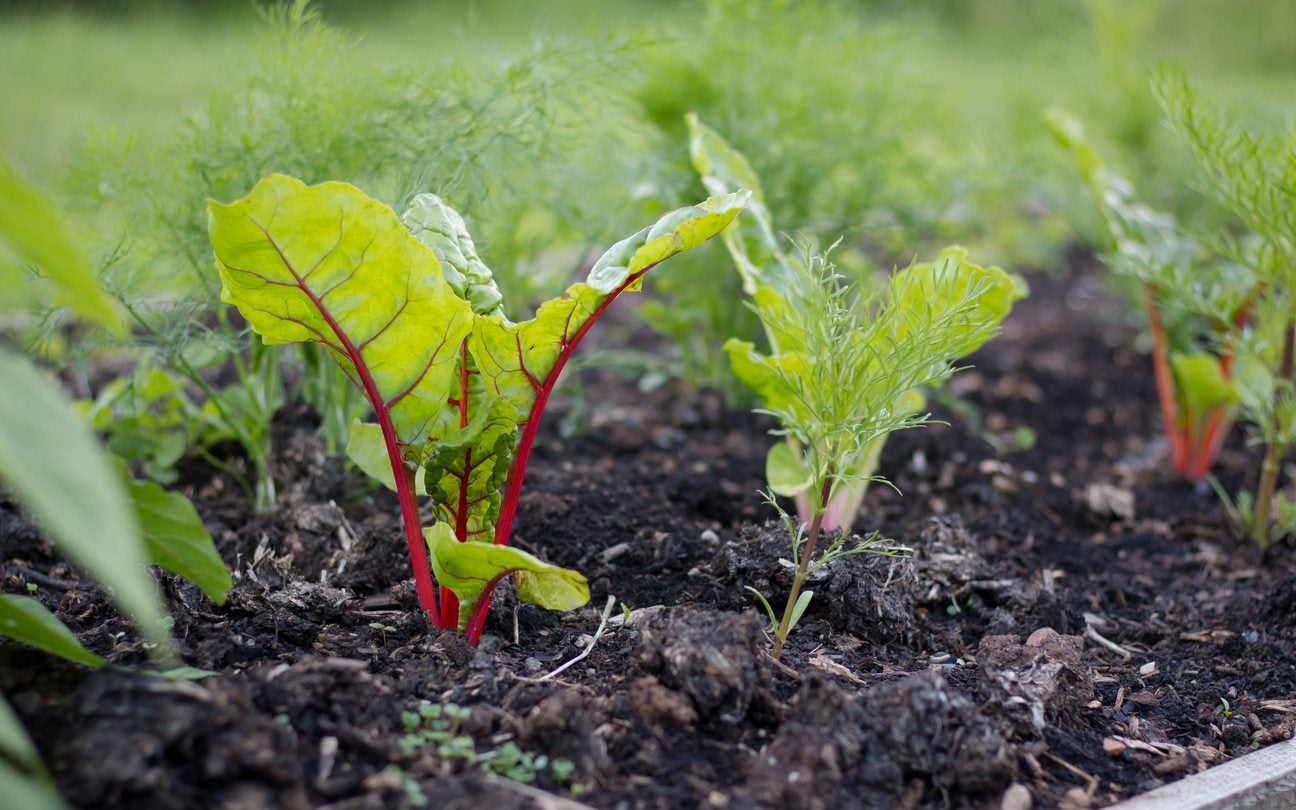Swiss Chard Spring Planting: When To Plant Chard In Spring


Swiss chard is a cool season vegetable and, as such, it can be planted early in spring or in midsummer for an early fall harvest. Springtime chard growing affords you an early hint of the season and provides the best tasting plant. Chard in summer can bolt and get bitter as the heat of the season brings out acidic juices in the plant. Swiss chard spring planting is one of the better times to sow and harvest this healthy, delicious plant.
When to Plant Chard in Spring
Whether you want a late season crop or early taste, planting of Swiss chard is nicely adapted to spring or summer sowing. This beetroot relative is similar to spinach but has a more refined flavor. It also has numerous cultivars in various hues, making it an attractive foliage plant in the garden and on the dinner table. If you know how to plant Swiss chard in the spring, you can have the early harvest you desire and still have time to plant a fall crop too. Timing of planting will depend upon your USDA zone. Each zone has a different last day of frost and average annual low temperatures. Chard is tolerant of cool temperatures, but it doesn't germinate during cold snaps or freezes. For this reason, you should wait to sow until your area’s last average date of frost. It is possible to start Swiss chard indoors, but the seedlings don't transplant well, and recovery can be spotty. For best results, Swiss chard spring planting should take place in early to midspring about two to three weeks before the average last frost date. Plants will perform best in the cooler parts of early summer but can survive through the heat of the season. If plants are still alive in late summer, cut them back and allow new leaves and stems to form as the weather becomes cooler. The flavors and colors will be better.
How to Plant Swiss Chard in Spring
One of the key ingredients to springtime chard growing is good drainage. Soil should be nutrient rich and deeply cultivated. Chard is not a root vegetable but is related to beets and loves the same deeply tilled soil that the root vegetable craves. Chard prefers soil with a pH of 6.0 to 7.0. Plant in full sun, 2 inches (5 cm.) apart and thin to 4 inches (10 cm.) apart when seedlings are a couple inches (5 cm.) tall. Spread a light dusting of soil over seeds and water in well. Seedlings should emerge in five to seven days. You can start harvesting leaves and petioles (the slender stem that supports a leaf) when they are nearly full sized. Leave a couple of leaves on each plant to harvest solar energy and promote the formation of new leaves. If you have plants that last through summer, cut them back entirely to encourage a new crop of leaves that won't be woody and bitter.
Harvest and Storage of Swiss Chard
While young chard leaves can be harvested at any time, it is best to give baby plants a little bit of time to establish themselves. Older plants can be cut back at least two times and allowed to regrow leaves and stems. Unfortunately, Swiss chard is very perishable and will only store in the refrigerator for two or three days. Stalks are a bit more durable if separated from the leaves and may keep for up to a week. The "cut and come again" nature of Swiss chard ensures plenty of frequent harvests, but so will succession planting. This is a great plant that will survive summer to produce new delicious leaves in fall or can be planted in two different seasons for harvests from spring to almost early winter.
Sign up for the Gardening Know How newsletter today and receive a free copy of our e-book "How to Grow Delicious Tomatoes".

Bonnie Grant is a professional landscaper with a Certification in Urban Gardening. She has been gardening and writing for 15 years. A former professional chef, she has a passion for edible landscaping.